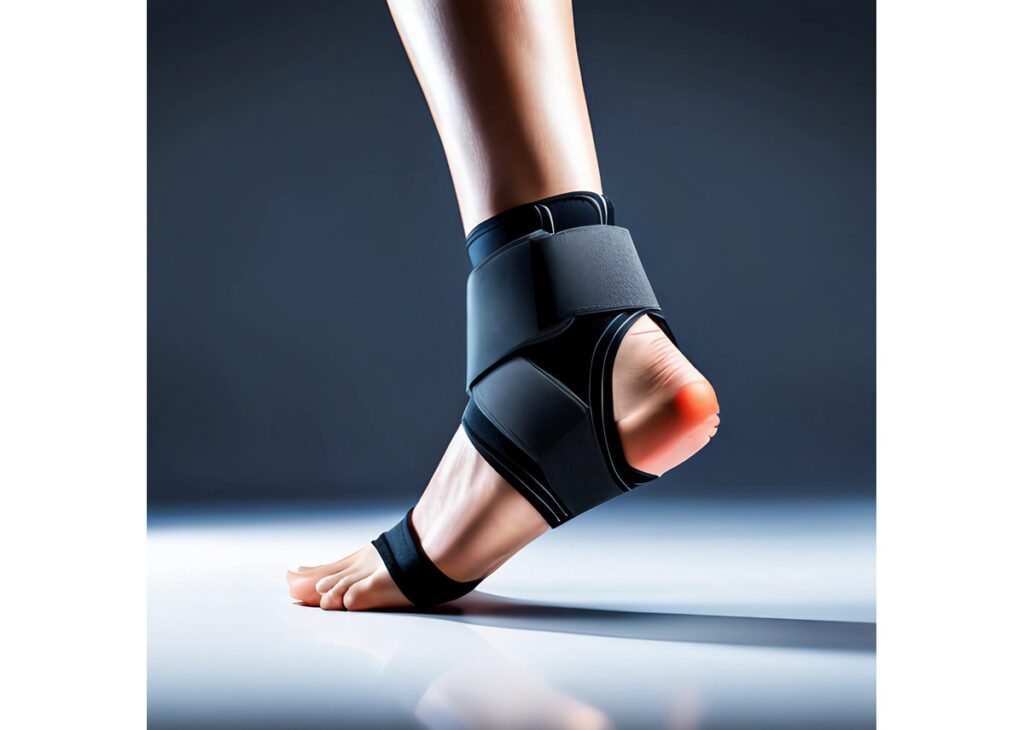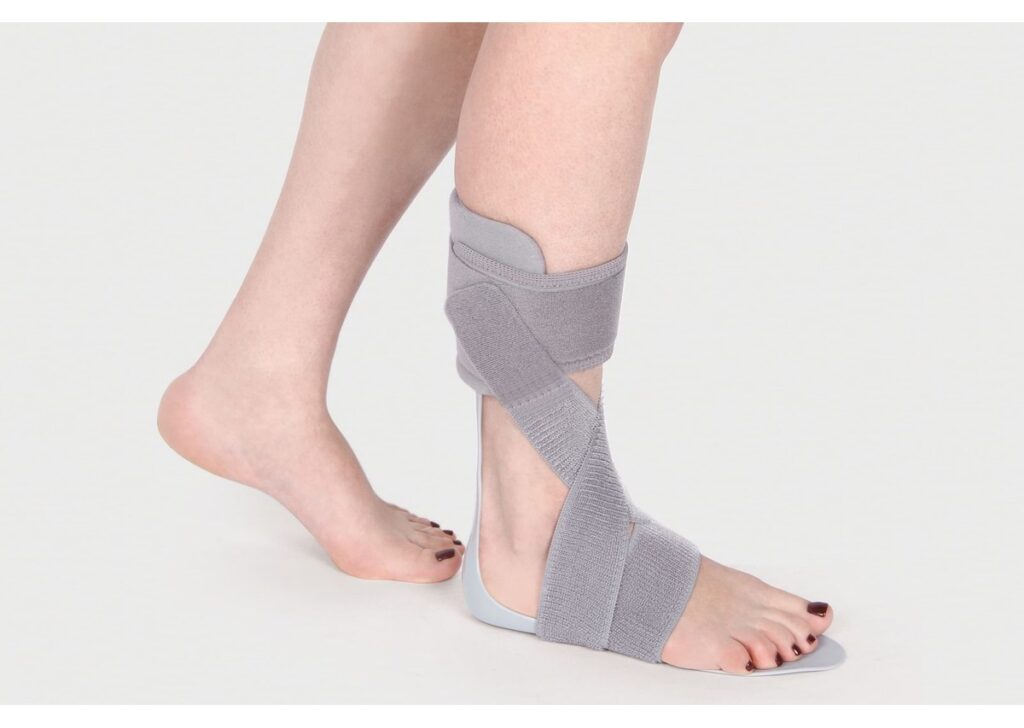Introduction to Ankle-Foot Orthoses (AFOs)
In occupational therapy, finding effective methods to support and enhance patient mobility is crucial. One such method that has gained prominence is the use of Ankle-Foot Orthoses (AFOs). These orthotic devices are designed to provide stability and support to the ankle and foot, helping individuals with various conditions improve their functional abilities. This explores the intricacies of AFOs, their role in occupational therapy, and how they can be effectively utilized to benefit patients.

The Role of AFOs in Occupational Therapy
Occupational therapists often encounter patients with mobility issues due to neurological or musculoskeletal impairments. AFOs play a pivotal role in the therapeutic process by providing the necessary support to help patients achieve their rehabilitation goals. These devices can assist in improving independence in Activities of Daily Living (ADLs) and Instrumental Activities of Daily Living (IADLs), gait, enhancing balance, and reducing the risk of falls. By incorporating AFOs into treatment plans, therapists can tailor interventions to meet the specific needs of their patients, ultimately leading to better outcomes.
To put it simply, AFOs are more than just supportive devices; they are integral tools that enable patients to regain independence and confidence in their daily activities. Whether it’s a child with cerebral palsy learning to walk or an adult recovering from a stroke, AFOs offer the stability needed to make meaningful progress in therapy.
By understanding the role of AFOs, occupational therapists can better advocate for their use and educate patients and caregivers on the benefits of these devices. This knowledge is essential in creating a holistic approach to rehabilitation that addresses both physical and functional aspects of patient care.
Types of AFOs and Their Indications
AFOs come in various designs, each tailored to address specific conditions and functional needs. Understanding the different types of AFOs and their indications is crucial for occupational therapists to make informed decisions about patient care.
Rigid AFOs
Rigid AFOs provide maximum support and stability to the ankle and foot. They are typically used for patients with severe weakness or paralysis, such as those with spinal cord injuries or multiple sclerosis. The rigidity of these devices helps maintain proper alignment and prevents unwanted motion.
Dynamic AFOs
Dynamic AFOs, also known as hinged or articulated AFOs, allow for controlled movement of the ankle joint. These are suitable for patients who require some degree of flexibility while still needing support. Conditions like cerebral palsy or drop foot often benefit from dynamic AFOs, as they help improve gait patterns and overall mobility.
Custom-molded AFOs
Custom-molded AFOs are tailored to fit the unique anatomy of each patient. These devices offer a precise fit, ensuring optimal comfort and effectiveness. Patients with deformities or complex biomechanical issues may find custom-molded AFOs particularly beneficial.
By familiarizing themselves with the various types of AFOs, occupational therapists can better assess which device will best meet their patients’ needs. This knowledge not only enhances the quality of care but also empowers therapists to advocate for the most appropriate interventions.
Benefits of AFOs

The benefits of incorporating AFOs into occupational therapy are numerous and significant. These devices offer a range of advantages that contribute to improved patient outcomes and overall quality of life.
Enhanced Mobility
One of the primary benefits of AFOs is the improvement in mobility. By providing support and stability, AFOs enable patients to walk more efficiently and with greater confidence. This enhanced mobility is particularly important for individuals with conditions like stroke, cerebral palsy, or peripheral neuropathy.
Increased Independence
AFOs empower patients to perform daily activities with greater ease and independence. Tasks such as walking, climbing stairs, and standing for extended periods become more manageable, allowing patients to engage in their preferred activities and routines.
Reduced Risk of Falls
Falls can have serious consequences, especially for individuals with mobility impairments. AFOs help reduce the risk of falls by providing stability and support, thus enhancing balance and coordination. This reduction in fall risk is crucial for maintaining patient safety and preventing injuries.
By highlighting the benefits of AFOs, occupational therapists can communicate the value of these devices to patients and caregivers. This understanding fosters a collaborative approach to rehabilitation, where all stakeholders work together towards achieving the best possible outcomes.
Custom vs. Prefabricated AFOs: Pros and Cons
When it comes to selecting AFOs, occupational therapists often face the choice between custom-molded and prefabricated devices. Each option has its own set of advantages and disadvantages, and understanding these can help therapists make informed decisions.
Custom-Molded AFOs
Pros:
- Precise Fit: Custom-molded AFOs are designed to fit the unique anatomy of each patient, ensuring optimal comfort and effectiveness.
- Address Complex Issues: These devices are ideal for patients with deformities or complex biomechanical issues that require specialized support.
- Enhanced Comfort: The personalized design minimizes pressure points and enhances overall comfort during use.
Cons:
- Higher Cost: Custom-molded AFOs tend to be more expensive due to the specialized fabrication process.
- Longer Fabrication Time: The production of custom AFOs can take several weeks, leading to potential delays in therapy.
Prefabricated AFOs
Pros:
- Cost-Effective: Prefabricated AFOs are generally more affordable than custom-molded options, making them accessible to a wider range of patients.
- Immediate Availability: These devices can be obtained quickly, allowing for prompt initiation of therapy.
- Versatility: Prefabricated AFOs come in various sizes and designs, catering to a broad spectrum of needs.
Cons:
- Less Precise Fit: Prefabricated AFOs may not provide the same level of individualized fit as custom-molded devices, potentially affecting comfort and effectiveness.
- Limited Customization: These devices may not address specific anatomical or biomechanical issues as effectively as custom-molded AFOs.
By weighing the pros and cons of custom-molded and prefabricated AFOs, occupational therapists can make well-informed decisions that align with their patients’ needs and goals.
Fitting and Adjustment Process for AFOs in Practice
The fitting and adjustment process for AFOs is a critical component of successful intervention. Ensuring that AFOs fit properly and are adjusted to meet the patient’s needs is essential for maximizing their effectiveness.
Initial Assessment
The fitting process begins with a thorough assessment of the patient’s lower extremities, gait, and overall functional abilities. Occupational therapists collaborate with orthotists to gather precise measurements and identify any specific requirements that need to be addressed during fabrication.
Customization and Fabrication
For custom-molded AFOs, the orthotist creates a mold of the patient’s lower limb, which serves as the basis for the final device. This customization ensures a precise fit that accommodates the patient’s unique anatomy. Prefabricated AFOs, on the other hand, are selected based on size and design specifications that closely match the patient’s needs.
Final Fitting and Adjustment
Once the AFO is ready, the final fitting is conducted. Occupational therapists and orthotists work together to ensure that the device fits comfortably and provides the necessary support. Adjustments may be made to optimize alignment, reduce pressure points, and enhance overall functionality. Educating patients on proper usage and maintenance is also a key aspect of this process.
By following a systematic fitting and adjustment process, occupational therapists can ensure that AFOs are effective in achieving therapeutic goals and improving patient outcomes.
Case Studies: Successful AFO Interventions in Occupational Therapy
Real-life case studies provide valuable insights into the practical applications and benefits of AFOs in occupational therapy. Here are a few examples of successful AFO interventions:
Case Study 1: Cerebral Palsy
A 10-year-old boy with cerebral palsy has experienced significant improvements in mobility and balance after being fitted with custom-molded dynamic AFOs. The devices provided the necessary support while allowing controlled movement, enabling him to participate in physical activities and gain confidence in his abilities.
Case Study 2: Stroke Rehabilitation
A 55-year-old woman recovering from a stroke benefited greatly from rigid AFOs. These devices helped stabilize her ankle and foot, reducing the risk of falls and enhancing her gait pattern. With regular therapy sessions and consistent use of AFOs, she regained her independence in performing daily activities.
Case Study 3: Spinal Cord Injury
A 30-year-old man with a spinal cord injury was able to achieve functional mobility with the help of custom-molded AFOs. These devices provided the stability needed to maintain proper alignment and prevent deformities. The patient’s overall quality of life improved as he regained the ability to walk short distances and engage in social activities.
These case studies highlight the transformative impact of AFOs in occupational therapy, showcasing the potential for improved mobility, independence, and overall well-being.
Conclusion and Future Trends in AFO Technology
The field of AFO technology is continuously evolving, with advancements aimed at enhancing the effectiveness and comfort of these devices. Emerging trends include the development of lightweight materials, adaptive designs, and smart orthoses that incorporate sensors and feedback mechanisms.
By staying informed about these trends, occupational therapists can ensure that they are providing the best possible care to their patients. The future of AFO technology holds great promise, with the potential to further improve mobility, independence, and overall quality of life for individuals with neurological and musculoskeletal conditions.
Encouraging Engagement with AFOs in Occupational Therapy
For occupational therapists, staying updated on the latest developments in AFO technology and best practices is essential. By actively engaging with professional communities, attending workshops, and participating in continuing education opportunities, therapists can enhance their knowledge and skills in this area.
The information provided on this website is for general informational purposes only. It is not intended as, nor should it be considered, professional or medical advice. Always consult a professional regarding your specific medical issue.
Frequently Asked Questions
What is an AFO?
An AFO, or Ankle-Foot Orthosis, is a medical device designed to provide support and stability to the ankle and foot. It is commonly used in the treatment of various neurological and musculoskeletal conditions to improve mobility and functional abilities.
How long does it take to get used to wearing an AFO?
The adjustment period for wearing an AFO varies depending on the individual and the specific device. Most patients require a few weeks to become accustomed to the feel and function of the AFO. Occupational therapists play a crucial role in guiding patients through this process and addressing any concerns that may arise.
Can AFOs be worn with regular shoes?
Yes, AFOs are designed to be worn with regular shoes. However, it is important to choose shoes that accommodate the AFO and provide adequate support. Occupational therapists can offer recommendations on suitable footwear to ensure optimal comfort and functionality. Occupational therapists are critical to the education to the patient and caregiver on donning and doffing the AFO. These frequently asked questions offer valuable information for patients and caregivers, addressing common concerns and providing guidance on the use of AFOs.
References
- Smith, J., & Thompson, R. (2020). The Role of Ankle-Foot Orthoses in Pediatric Therapy. Journal of Pediatric Rehabilitation Medicine, 13(4), 345-356.
- Johnson, L. A., & Smith, M. R. (2019). AFOs in Stroke Recovery: Strategies and Outcomes. Rehabilitation Research and Practice, 2019, Article ID 8906563.
- Wilson, N., & Garcia, H. (2021). Advancements in Orthotic Technology: A Comprehensive Review. Journal of Prosthetics and Orthotics, 33(2), 84-95.
- American Physical Therapy Association. (2022). Guidelines for the Use of AFOs in Rehabilitation. Retrieved from APTA.org
- Lutz, G., & Hiller, M. (2023). Adaptive AFO Designs: Benefits and Future Directions. Journal of Orthopedic Innovation, 45(1), 20-30.
- Brown, T., & Carter, S. (2020). Reflections on Custom-Molded AFOs in Clinical Practice. The Orthotic Journal, 15(3), 142-150.
Recently Featured OT Insider Posts
Enhancing Sitting Balance in Occupational Therapy for Patients
50 Essential Medical Abbreviations in Occupational Therapy
Understanding OTA: The Role of OTAs in Patient Care
Breaking down THA. The Key to Mastering OT Documentation
Improving Lives: Parkinson’s and Occupational Therapy
Occupational Therapy Driving Evaluation for Enhanced Mobility
The Vital Role of Occupational Therapy for Patients with BKA
